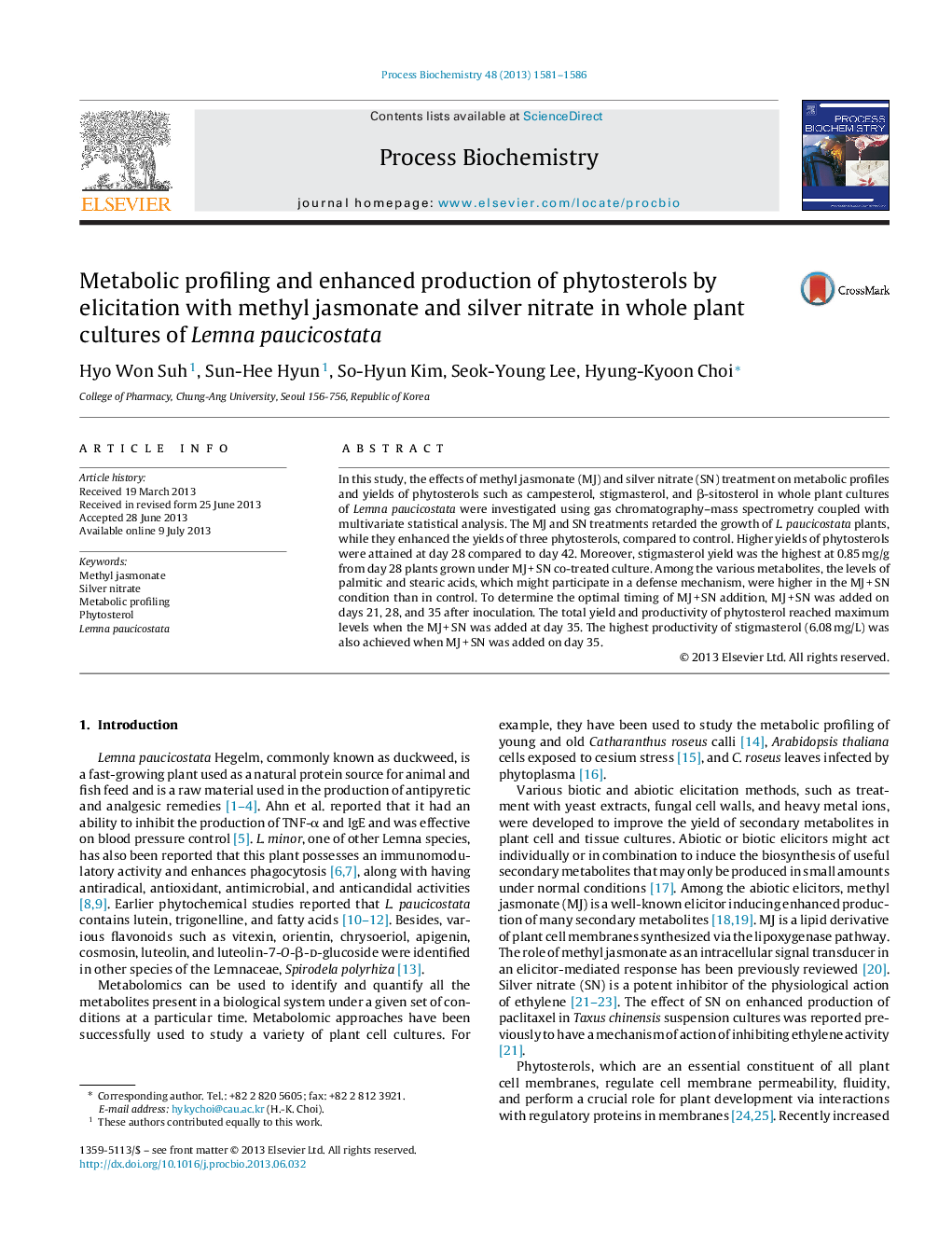| Article ID | Journal | Published Year | Pages | File Type |
|---|---|---|---|---|
| 34555 | Process Biochemistry | 2013 | 6 Pages |
•Methyl jasmonate (MJ) and silver nitrate (SN) were treated in Lemna minor cultures.•Co-treatment with MJ and SN at day 35 exhibited the highest phytosterol production.•The underlying mechanisms for enhanced production of phytosterols were suggested.
In this study, the effects of methyl jasmonate (MJ) and silver nitrate (SN) treatment on metabolic profiles and yields of phytosterols such as campesterol, stigmasterol, and β-sitosterol in whole plant cultures of Lemna paucicostata were investigated using gas chromatography–mass spectrometry coupled with multivariate statistical analysis. The MJ and SN treatments retarded the growth of L. paucicostata plants, while they enhanced the yields of three phytosterols, compared to control. Higher yields of phytosterols were attained at day 28 compared to day 42. Moreover, stigmasterol yield was the highest at 0.85 mg/g from day 28 plants grown under MJ + SN co-treated culture. Among the various metabolites, the levels of palmitic and stearic acids, which might participate in a defense mechanism, were higher in the MJ + SN condition than in control. To determine the optimal timing of MJ + SN addition, MJ + SN was added on days 21, 28, and 35 after inoculation. The total yield and productivity of phytosterol reached maximum levels when the MJ + SN was added at day 35. The highest productivity of stigmasterol (6.08 mg/L) was also achieved when MJ + SN was added on day 35.
